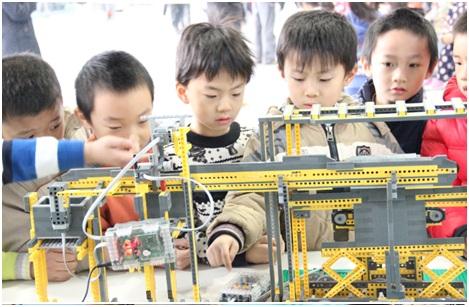Technology education has become a necessity, instead of an enrichment, according to Ms Zhang Caifang, a business manager from STEMedu, a leading operator of edutainment and technology education in China.
Speaking to The Independent at EduTECH Asia 2017, Ms Zhang said there is a massive amount of money flowing into innovation in artificial intelligence in China, as part of “national AI development plan” which committed it to spending $29.8 billion on AI research by 2020 and $79.48 billion by 2025. Under the national plan, introduction of technology into education system is compulsory. STEMedu focuses on the popularization of youth science and technology innovation education in China.
Authorised by the Ministry of Education in China, the organization is now at the forefront of efforts to push technology education, and to set up the main base for Ministry of Education leaders to do research and train teachers.
STEMed launched China’s first set of complete education and teaching materials for k12 stage through successively cooperating with University of California, Beihang University, Southeast University, Bangkok Thonburi University. At present, it has provided more than 2200 primary and middle schools with in-class and extra-curricular innovative teaching and product services.
“Our services have covered 20 cities and more than 300 thousand students in China mainland,” said Ms Zhang.




Ms Zhang said that “there might be a plan to venture into Singapore market, as we believe we have better expertise, more plentiful resources for the challenges ahead.”
This year’s EduTECH Asia saw more than 200 international speakers, 2,500 attendees and 60 education product vendors at Suntec convention centre, in an attempt to encourage students from pre-school to tertiary levels to take advantage of digital innovations and groom vital skills for the workplaces of tomorrow.
Held on Nov 8 and 9, the event also involved important exchanges among educators, school leaders, policymakers as well as education service providers, so that teaching methods, schools and education policies can be transformed to take advantage of educational technology.

